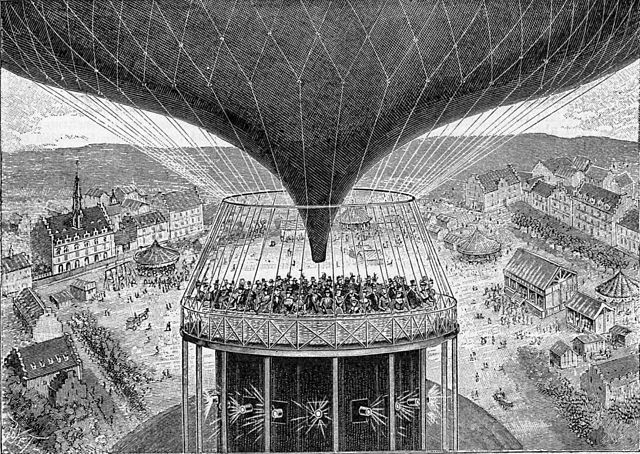Cinéorama was an early film experiment and amusement ride presented for the first time at the 1900 Paris Exposition. It was invented by Raoul Grimoin-Sanson and it simulated a ride in a hot air balloon over Paris. It represented a union of the earlier technology of panoramic paintings and the recently invented technology of cinema. It worked by means of a circulatory screen that projects images helped by ten synchronized projectors.
Cinéorama
Inside of the projection booth
Camera platform
Panoramic paintings are massive artworks that reveal a wide, all-encompassing view of a particular subject, often a landscape, military battle, or historical event. They became especially popular in the 19th century in Europe and the United States, inciting opposition from some writers of Romantic poetry. A few have survived into the 21st century and are on public display. Typically shown in rotundas for viewing, panoramas were meant to be so lifelike they confused the spectator between what was real and what was image.
Panorama of a half section of Night Revels of Han Xizai, 12th century Song Dynasty painting
Panorama Along the River during the Qingming Festival, 18th copy of an original from the 12th century by Zhang Zeduan
Robert Mitchell's diagram illustrating the Leicester Square Rotunda, in which was exhibited the Panorama, 1801 (annotated adaptation)
Cross-section of the Rotunda in Leicester Square in which the panorama of London was exhibited (1801)







